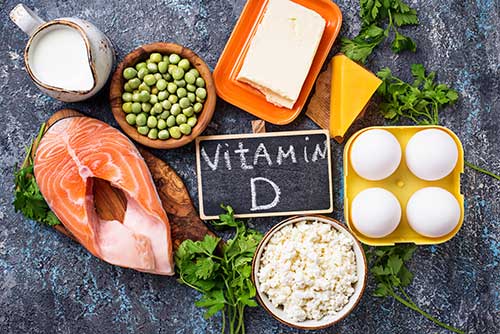Nutrition and Bone Health
Proper nutrition should nourish all our organ systems. It is heart-warming to hear many people visiting our clinics mentioning the need for a fat-free and low salt diet for cardiovascular wellness, adequate hydration for good kidneys, fitness-oriented diet plans and the importance of anti-oxidants for healthy skin. Most diabetic patients are well aware of the importance of a balanced nutritious diet. Likewise, it is essential to be aware of bone-related nutrition as many of the conditions causing joint pain, back and neck pain and early fatigue are due to musculoskeletal malnourishment.

Bones, the basic framework of our body not only provide shape, stability and help in movement, but also play a vital role in blood formation and immune cell production. “Think bone, think calcium” is the conventional thought instilled in our minds by decades of public education, but there’s more to it than that! Proteins and micronutrients including vitamin D, phosphorus, magnesium, zinc, vitamin K and vitamin B are the most vital nutrients for building strong bones.
Malnutrition can affect bones directly as well as indirectly.
Direct Consequences:
Calcium and vitamin D deficiency can lead to softening and weakening of bones – causing rickets in children and osteomalacia in adults, and in elderly individuals and peri-menopausal women it leads to osteoporosis. It can lead to accelerated ageing, causing early onset osteoarthritis, cervical and lumbar spondylosis and mobility issues.
Indirect Consequences:
Poor nutrition and a sedentary lifestyle lead to muscle wasting, defined as sarcopenia. Muscle bulk and tone are essential for strong bone formation and joint preservation. Hence, sarcopenia can result in weaker bones – osteopenia which is well-documented in scientific literature. In obese individuals, muscle tissues are infiltrated with abnormal fat and hence sub-optimal functioning which explains the causal relationship between obesity and osteoporosis.
Obesity, the global pandemic, can affect bone health in many ways. Our bones develop with age according to the functional demands i.e., athletic kids, sports people and weight-lifting personnel have bigger bones than a regular person. At the end of skeletal maturity at around 21 years of age, the fully developed bones are only prepared to handle the load to which they have already been accustomed. Also, bone mineral density tends to reduce after 40-50 years of age due to hormonal changes, which can only be partially reduced with nutrition and activity. Overloading this bone with extra weight from obesity will hasten the wear and tear and that’s why we see many middle-aged obese people with laboured mobility.
Nutrient Sources for Healthy Bone
Calcium-rich food like milk and dairy products, green leafy vegetables, ragi, almonds, figs, soy milk, fish like salmon and sardines and seeds like chia seeds, etc. should be made a part of our daily diet. Vitamin D has an important role in the absorption of calcium from our diet. Likewise, proteins are the major nutrients involved in forming the bone matrix – the fundamental layer on which calcium and other mineral deposition occurs. Eggs, fish, meat, milk and dairy products, soy products, pulses and cereals are good protein sources to include.

Dr. P. Keerthivasan
Consultant Orthopaedic Spine Surgeon
Kauvery Hospital, Chennai

